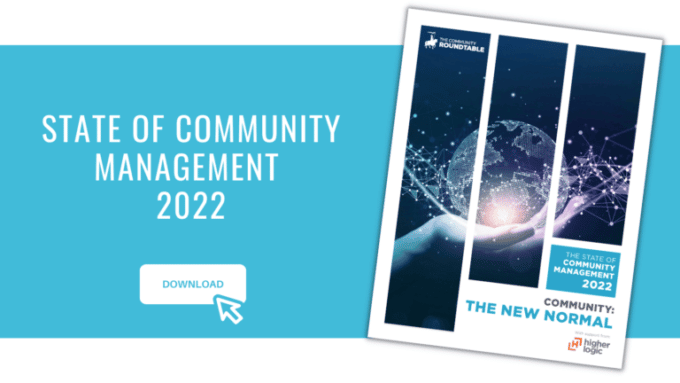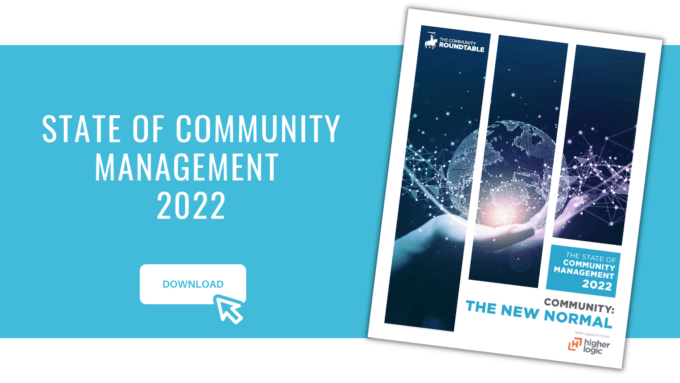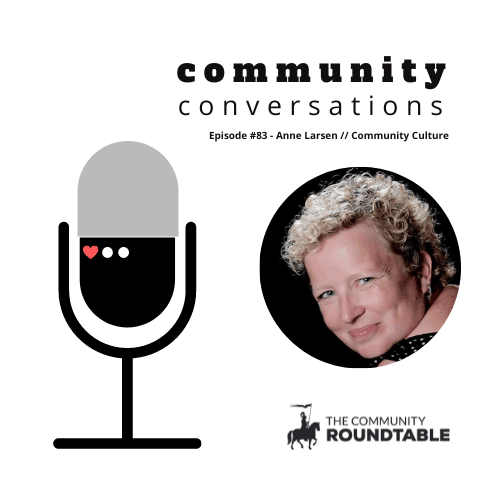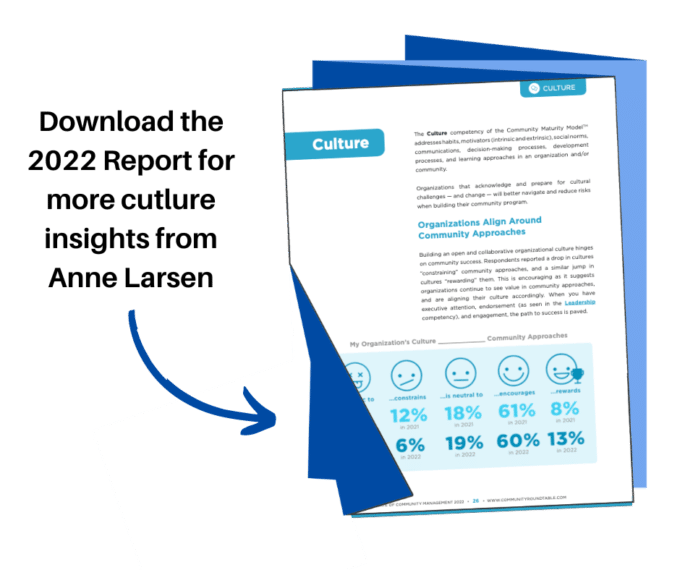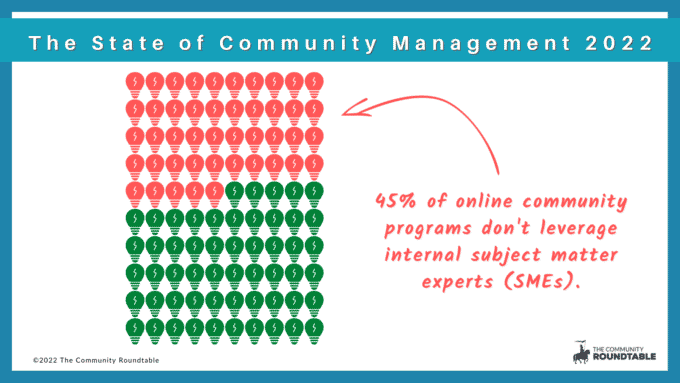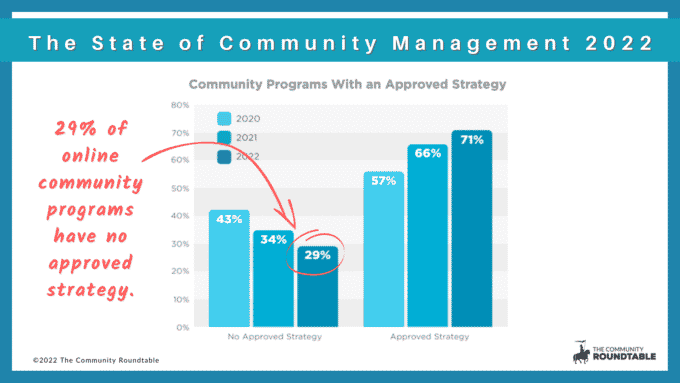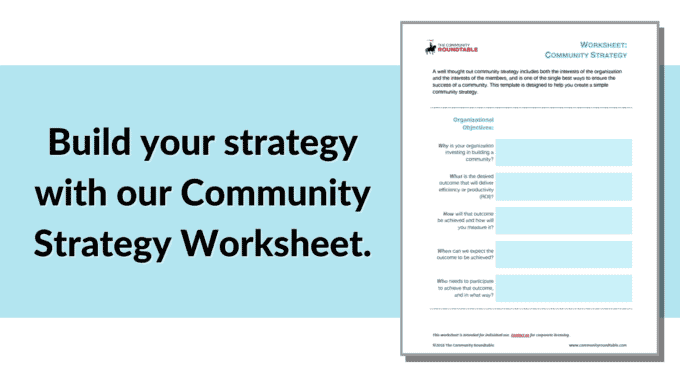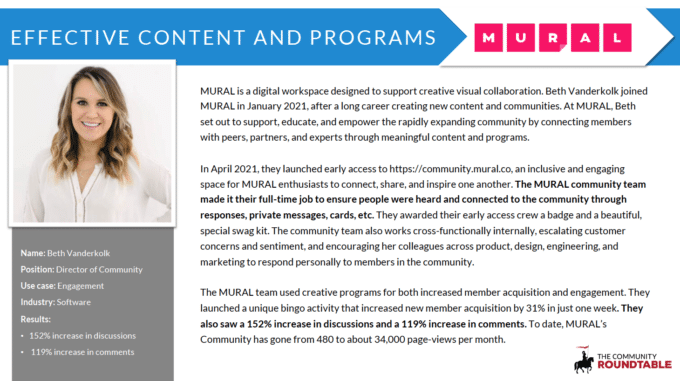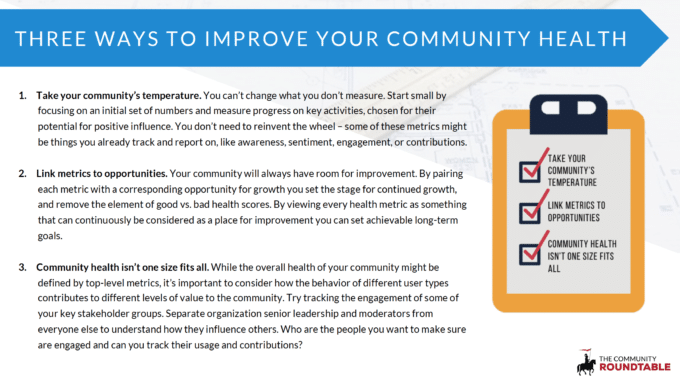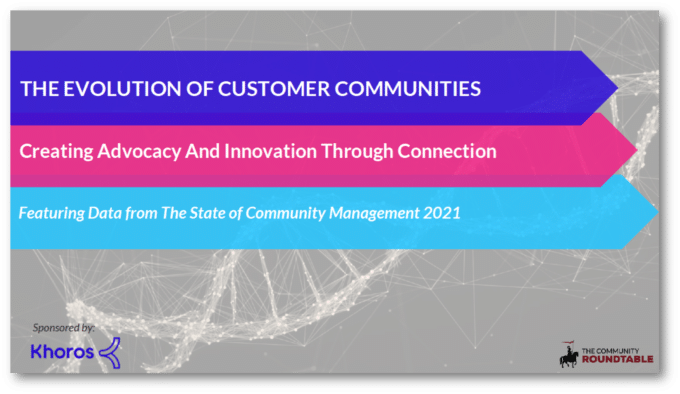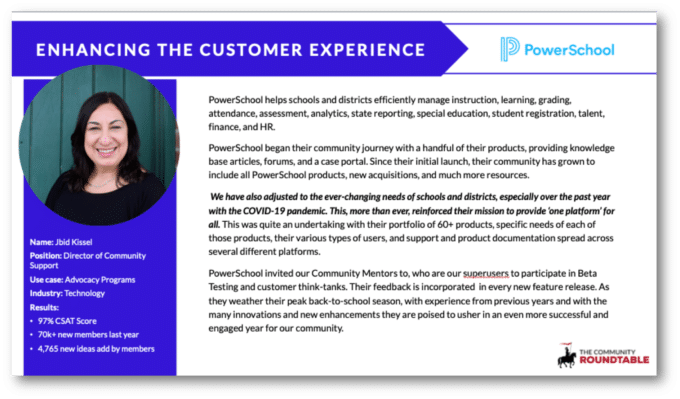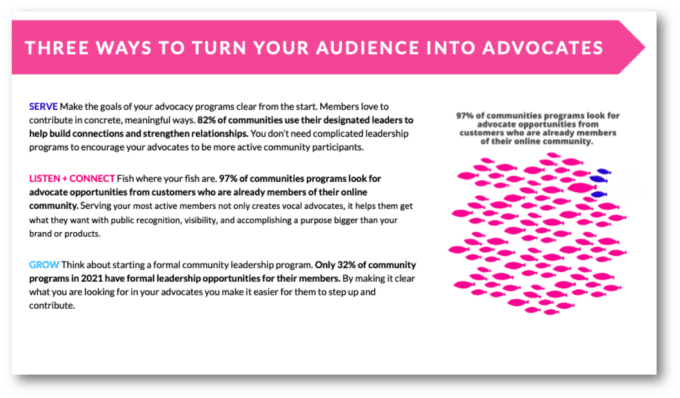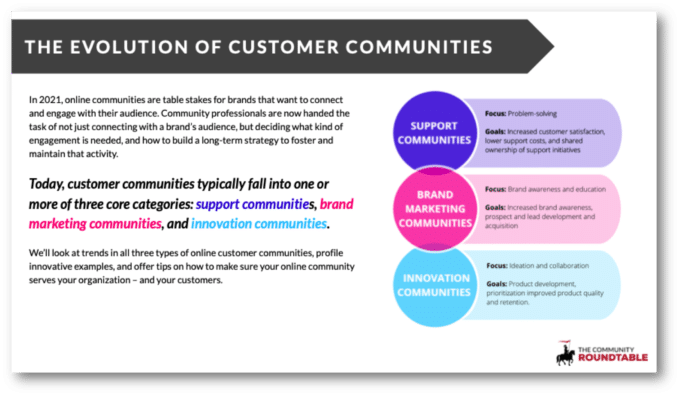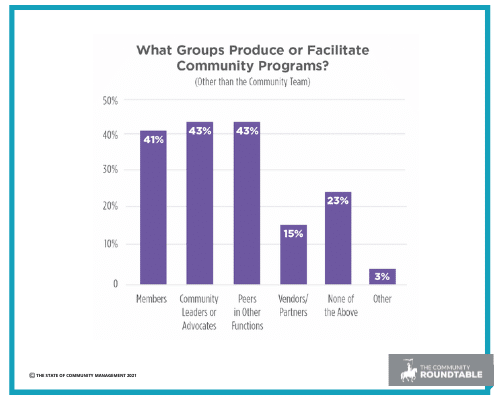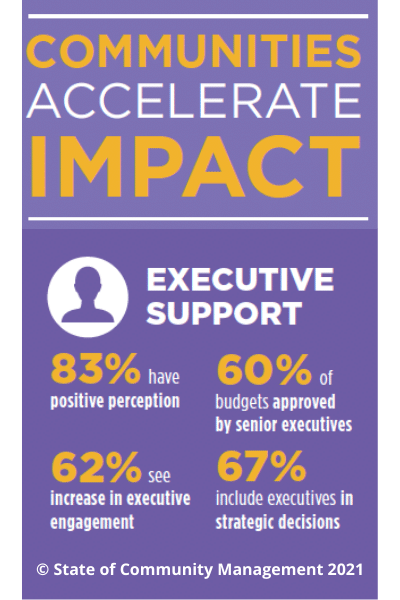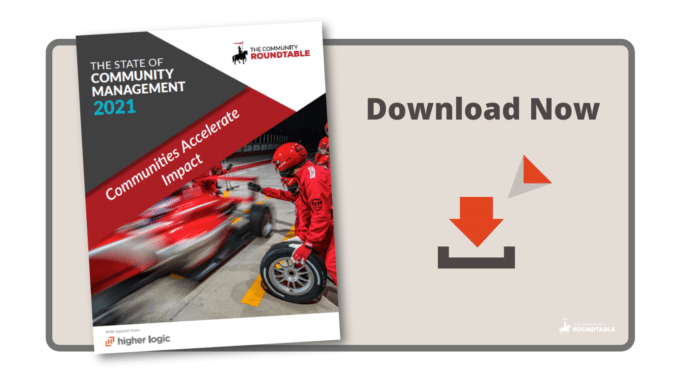The Content & Programs competency of the Community Maturity Model™ examines the resources and interactions a community offers its members, and is the lifeblood of a successful community program. Content gives people a reason to visit (and return to) a community, while programs create opportunities for members to connect, creating tighter bonds. Content & programs must reflect the shared value of the community and its members, while a program plan tied to the larger community strategy can lead to valuable engagement behaviors.
Savvy community teams leverage external sources to create content and facilitate programs for their members — whether SMEs, executives, or strategic partners.
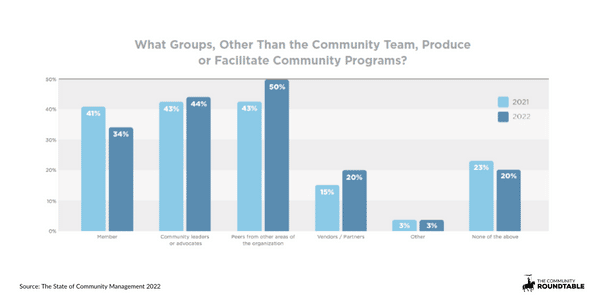
Using external sources is a “work smarter, not harder” way to scale your community team. Two notable examples of external community contributors that jumped in 2022:
- Peers from other areas of the organization (50% vs. 43% in 2021)
- Vendors/partners (20% vs. 15% in 2021)
Member participation in content & programs dropped year over year, likely due to fatigue and burnout associated with COVID-19. While this would normally be seen as a negative, it’s actually a balanced approach to content & program development, and member participation remains at a healthy level.
Reminder: You won’t successfully attract (and retain) outside voices to your content & programs without a formal plan. This is the year to formalize a content & program plan.
The community budget for content & programs has more than doubled in the last three years (3% in 2020 vs. 7% in 2022). This is a win for a critical piece of the community-building puzzle. As your content & programs budget grows, ensure you’re moving toward a formal plan aligned with your community strategy – which might include paid programs for external contributors. This will allow you to show your content & program efforts are growing engagement and meeting (or exceeding!) your community’s goals.
Content Pro Tip from Kelly Munro, Lead Community Advisor, Xero, and member of TheCR Network
If you’re at an organization with an existing marketing team you might have a goldmine of content at your disposal.
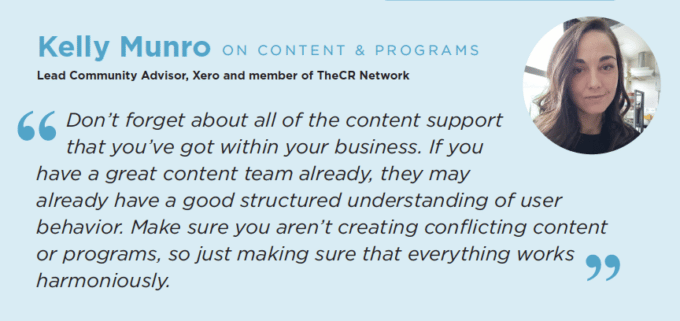
“Don’t forget about all of the content support that you’ve got within your business. If you have a great content team already, they may already have a good structured understanding of user behavior. Make sure you aren’t creating conflicting content or programs, so just make sure that everything works harmoniously.”
Get more community ideas and advice in 13th annual 2022 State of Community Management report:
